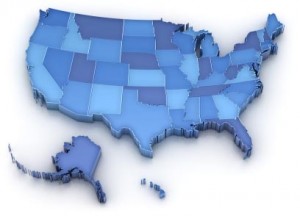Connecticut Ranks #39 Among States for Retirement; Lowest In New England
/Connecticut, ranking 39th overall and lowest among the six New England states, came away with a mixed bag of results on a list of the “Best and Worst Places to Retire,” compiled by the financial data website bankrate.com and published this week. The good news: Connecticut ranked #6 in crime rate, the state’s highest ranking among the six categories included in the survey, and just outside the top ten at #12 for health care quality. Undeterred by the challenging February weather this year, Connecticut ranked #14 for weather among the nation’s 50 states. Not so good – Connecticut ranked near the bottom, at #48, in cost of living, and at the middle-of-the-pack, at #24, for community well-being.
The survey of around 1,000 adults in the U.S. questioned what Americans' priorities are when it comes to retirement. Nearly a quarter of those surveyed said being close to family was the deciding factor. But when it came to climate, while around a quarter prefer being close to a beach, nearly 40 percent of people want access to the great outdoors, rivers and mountains, according to published reports highlighting the survey results.
The top 10 states were Wyoming, Colorado, Utah, Idaho, Virginia, Iowa, Montana, South Dakota, Arizona and Nebraska. The highest ranked New England states were Maine at #12, Vermont at #15 and New Hampshire at #16. Massachusetts came in at #18 on the list, and Rhode Island was just ahead of Connecticut at #38.
By category, Minnesota topped the list in health care quality, Hawaii was #1 in community well-being, New Mexico was #1 in weather, and Mississippi (which ranked #36 overall) had the lowest cost of living. Vermont had the lowest crime rate and Wyoming the lowest tax rate.
Bankrate provided the following breakdown of the origin of the data used in compiling the rankings: The cost-of-living data was provided by the Council for Community and Economic Research, a Virginia-based group that tracks retail prices in more than 300 communities around the country. Crime statistics include property and violent crimes reported by police departments to the FBI.
Health care quality scores come from the Agency for Healthcare Research and Quality, a federal office that measures each state's performance on about 160 different health-related issues. The National Oceanic and Atmospheric Administration provided weather data, including readings on temperature, humidity and sunshine. The "well-being" scores for seniors were from Healthways, a research group that works with the Gallup polling service to survey the public about their happiness and general satisfaction with their surroundings.
There are worse places than Connecticut to retire, according to the survey. Among them: Oklahoma, Oregon, Missouri, Kentucky, Louisiana, West Virginia, Alaska, and Arkansas, as well as New York and New Jersey. Hawaii also ranked in the bottom 10, largely due to its highest-in-the-nation cost of living.































